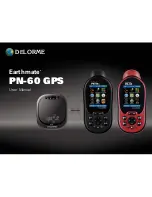
8
ACCESSORIES
The coupling clamp is useful when the utility is exposed,
and a direct connection is not possible. It is plugged into
the same plug-in socket as the ground-plate/ground-rod
assembly. The coupling clamp only operates at the 82
kHz frequency. The coupling clamp will fit around utilities
that are 3-¼ inches in diameter or smaller. The length of
the cable is approximately 10 feet.
Coupling Clamp
Fisher Research Laboratory has a variety of headsets
available.
•Ultra-quiet deluxe Fisher Phones. High quality sound while
reducing the outside noise.
•Standard Stereo Headphones
•Single Earpiece Headset. Enables the operator to ef-
fectively listen to the TW-8800 and remain aware of noise
in close proximity.
Headsets
This represents a jumper
Coupling Clamp Applications Diagram
A. The coupling clamp is for all
tracing applications with conduc-
tors exposed; exception, an open
circuit at line’s termination.
B. A ground must be provided
for the proper current flow when
the coupling clamp is used at a
termination.
C. The coupling clamp must be
used between the grounding
and where the line goes under-
ground.
D. Trace signal will return to ground
when incorrectly coupled.
E. Signal will be transmitted in both
directions when connecting is
midway in a long conductor.
F. Drop lines or laterals divide the
signal strength in half at each
junction.
9
OPERATING INSTRUCTIONS
The following instructions are designed for safe and effective
methods of line tracing and utility avoidance. Some of the steps
may not be applicable in all situations. The underlying guideline
is that operator safety must be maintained at all times. Use of
safety equipment, extra personnel, and up to date as-built plans
should be considered when necessary.
The TW-8800 gives the operator many tools in one easy to use
package. The following information can serve as guidelines to
assist the operator in using the TW-8800.
METHOD OF LOCATING
(The passive modes have no visual readout on the display.
Increasing the volume will give both an audio and a tactile
response.)
50 Hz/60 Hz (Power) Mode
Ideal for scanning an area to locate energized electrical
cables. Caution: Lower power may not give a clear, strong
response.
Radio Mode
Another scanning mode. Some telecommunications will
give a response in this mode.
82 kHZ
A good easy to use frequency. This frequency can be used
conductively, inductively, or with the coupling clamp.
Ideal situations include utilities that are noncontinuous,
poor conductors, not grounded, or where a direct con-
nection is not available. Examples of these would include
water mains with gaskets at the joints, telecommunication
cables where a direct connection is not available, and
wire in conduit that is non-continuous through out. High
frequencies have a tendency to induce signal onto other
utilities if nearby
Passive Mode
Active Mode
























